Genre: FPS
Publisher: SCEA
Developer: Zipper Interactive
Release Date: November 8, 2005
Buy 'SOCOM: U.S. Navy SEALs Fireteam Bravo': PSP
SOCOM games are good, and portable SOCOM, despite its concessions for the PSP button layout, is a killer app. It is the perfect showcase of what an online portable game should be, doing just about everything right feature-wise, with only a few issues to deal with, most of which stem from the PSP itself, not the game.
It seems like a strange idea, portable online gaming, but now that I have experienced it, I can only hunger for more. Between SOCOM III and this, I can only say that the future for this style of play is very, very bright, despite the many reservations I had about the performace and need for such games.
SOCOM: Fireteam Bravo as a single-player game is just above mediocre, and as an ac-hoc multiplayer experience is a passable, though fun, event. But online, with 16 players sitting in coffee shops, living rooms, and rest stops around the world, it is a fantastic method of communication between like-minded gamers around the world. It brings the concept of screaming out orders (and looking like a disturbed schizophrenic in the process) to the seven other dolts on your team to any location that happens to be spouting wifi into the air, which these days means just about everywhere. And, almost more importantly, it brings the online experience to anywhere in the home, allowing the most relaxing experience possible.
Come on, who would have thought you could wander into the kitchen for a snack without missing a beat, then die, eat, and keep your eye on the screen until the next game starts? This is online gaming at its most gripping in years, and given how early a release this is, it's probably only a sliver of the games to come in the next decade. (I still assume that, looking at the thin online game release lists, that it's going to take a few years for this to really catch on.)
But first, I must delve into the admittedly banal single player, along with the simplified, somewhat cheapened game mechanics that permeate even the online mode. This is not the perfect game, but it is an impressive early look at what can be done with the PSP and online gaming in the future.
The game, thankfully, begins with an optional spattering of tutorial screens. Most of the information on these can be found in the manual, so players can look them up at their leisure (or not at all, as most can be figured out fairly easily), but for those of us who prefer not to read anything that isn't printed on a backlit screen, this function works just fine.
The controls are not as intuitive as the PlayStation 2 SOCOM games, yet, thanks to the lock-on system, make the game a bit easier to play after figuring them out. Due to the lack of a second analog stick, along with two shoulder buttons, even the rarely used R3 and L3 buttons, Fireteam Bravo is forced to make some telling compromises, the first being the lack of dual-analog movement.
In a tactical shooter, freelook is imperative to the experience, as well as being able to look and strafe at the same time. Fireteam Bravo deals with this by allowing players to look freely while standing still by pressing right on the d-pad. Otherwise, the strange yet useable control system of rotation default/strafe with R seems to work just fine. Pressing R allows players to lock on, but there's a catch: simply pointing and shooting will not guarantee a direct hit, as in, say, Metroid Prime. Now, variables such as firing rate, running speed, and character stance must be considered more than ever if the ever-pursued headshot is to be had.
If anything, this feature has forced players to pay much more attention to the weapons they choose than in previous SOCOM games. Each movement is completely crucial. While "locking on" removes some of the element of surprise, since players can continuously "scan" by pressing R over and over, this is likely the best idea that could have been devised, and is definitely the best implementation on PSP yet.
Of course, as with every SOCOM game, the single-player design is not the best avenue through which to highlight these features. The enemies are, on every difficulty mode, complete, robotic fools with little in terms of ... let's say ... intellect when engaging in battle. If this were Doom, it would be forgivable, but after the AI patterns shown off in basically every Tom Clancy game ever released, this is just embarrassing.
Equally bad are the actual mission designs themselves, which rarely consist of more than a few visually marked checkpoints being strewn about. Point A to point B to point C to point D to point F back to point A; okay, so maybe you could replace those letters with fancy terms like "charlie" and "delta," but the end result is the same. And through all of this, you'll only die if you're not paying attention.
It is the online mode where these problems are rectified.
Unlike Rainbow Six, which offers a great cooperative experience along with solid team deathmatch, SOCOM is all about team vs. team. It is completely designed around the exhilaration of besting real human beings, not the disabled AI parameters that wander about the offline mode. And these levels are designed for it. Specific points of conflict are built just so they drag both sides into all-out strategic conflict.
Three guys toss grenades, run, while another two wait on the other side of the cave to catch the opposing team as they flee — if they survived the initial holocaust. Lure enemies into a building by giving them gunfire on all sides, only to run into your two RPG-wielding teammates inside. Set up shop sniping on top of a bridge with four other guys, while the rest of your team leads the enemies into your sights.
Of course, most of this isn't anything that hasn't been seen before in other tactical shooters, but the key is, none of it has been seen on a handheld. Not in this form. (Sorry, Rainbow Six for Gameboy Color.)
The best of it is in how well the interface works. Players set up static accounts — or not, if they have already registered on another SOCOM game — complete with friends lists, ranking information, mailboxes, and access to a Fireteam Bravo minisite. The server list is streamlined and informative, and takes very little time to load. Servers are located all around the country for optimal connections, and for the elitists, some are dedicated only to the highest ranking players.
For the first online shooter on the console, things are looking very good.
But while the online experience is smooth and unobtrusive, the game sometimes can be just the opposite. The polygon count is noticeably lower than the console versions — almost too low. And slowdown is abundant in some areas, regardless of whether or not there are 16 players on-screen.
On the plus side, animations are as smooth as ever when the framerate is constant, and basically ripped straight from previous SOCOM games. For serious players, this title is honestly familiar enough on the eyes that they might be content to stick with it over SOCOM 3 if they enjoyed the portable format enough, and this is despite the few graphical issues, of course.
Sound is a mixed bag, with a few tunes — namely the terrorist and victory jingles — seeming completely from left field. The terrorist songs especially seems stereotypical interpretations of Middle-Eastern fare, and prove to be little else outside of embarrassing and perhaps slightly biased toward the American perspective in the current conflict. (But this game isn't directed completely towards your regular liberal, hence the Bush quotation "freedom is on the march" displayed directly on the back of the box!) But the sampling is impeccable, and requires headphones even for the few poor souls too penniless to purchase a proper headset.
Every single sound has a modified counterpart based on environment and direction. Hallways and caves have a specific, vague, echoed tone, while average rooms have an abrupt attack, and large, open spaces given a booming, echoing ring. The ambient sounds are flooring, especially during the outdoor winter stages. The wind swirls and echoes and modulates based on position (under a small wooden structure for cover, for example). All of the above makes acute use of stereo, each representing the respective ears of the in-game avatar, giving savvy players a good idea where the action is. This is the best sound design heard on a handheld, bar none.
The most important sounds are the voices of other human beings. Voice chatting is the axis of the whole game and keeps players engaged by helping to emulate the military experience in a playful way, in addition to serving as a great way to meet people and to feel like you're playing right next to old friends hundreds of miles away. The official headset works great and provides optimal microphone and speaker quality, and the in-game handling of chat is usually crystal clear.
PSP owners, for an online game, this is the one to get. Definitely not Twisted Metal: Head On. Fireteam Bravo is stable, cerebral, and while it is admittedly problematic and somewhat generic, it is stable and simple enough that it's perfect when you've got a half hour to kill and a wifi connection nearby. SOCOM 3 players have the added incentive of linking up their PSP with their PS2 for added features, most notably unlockable player models (show 'em off to all your friends online!) and actual modified mission objectives, since the two stories take place at the same time, thus cementing the fact that PSP games are doomed to be side stories of more established PS2 titles. This is a game that even jaded SOCOM purists can enjoy, despite its changes, and one that casual and hardcore gamers looking for a fun, contained experience can get a few months worth of joy out of. Another online game will surely dethrone Fireteam Bravo readily, but for a first showing of voice chat and 16-player madness, this game is worth the 60 bucks needed for its proper experience.
Score: 7.9/10
More articles about SOCOM: U.S. Navy SEALs Fireteam Bravo


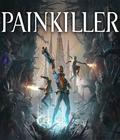
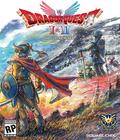
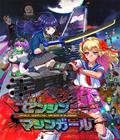
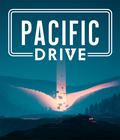





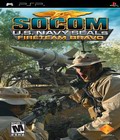 SOCOM: U.S. Navy SEALs Fireteam Bravo will offer fans of the multi-million selling franchise all-new single-player and wireless multiplayer gaming missions in four different Areas of Operation (AO). Players are tasked with completing 14 unique, realistic international single-player missions, including Chile, which is a unique AO only available in the PSP release. As the SEAL commander, the player will be supported by an AI teammate executing traditional SOCOM team-based tactical, stealth and action gameplay. After successfully completing a level, players can replay the mission in an entirely new way through the "Instant Action" option, with different objectives, enemy and object placement. In addition, multiple players will be able to form clans and take on their friends for team based high-action gameplay in SOCOM Fireteam Bravo via a Wi-Fi* connection.
SOCOM: U.S. Navy SEALs Fireteam Bravo will offer fans of the multi-million selling franchise all-new single-player and wireless multiplayer gaming missions in four different Areas of Operation (AO). Players are tasked with completing 14 unique, realistic international single-player missions, including Chile, which is a unique AO only available in the PSP release. As the SEAL commander, the player will be supported by an AI teammate executing traditional SOCOM team-based tactical, stealth and action gameplay. After successfully completing a level, players can replay the mission in an entirely new way through the "Instant Action" option, with different objectives, enemy and object placement. In addition, multiple players will be able to form clans and take on their friends for team based high-action gameplay in SOCOM Fireteam Bravo via a Wi-Fi* connection.

























